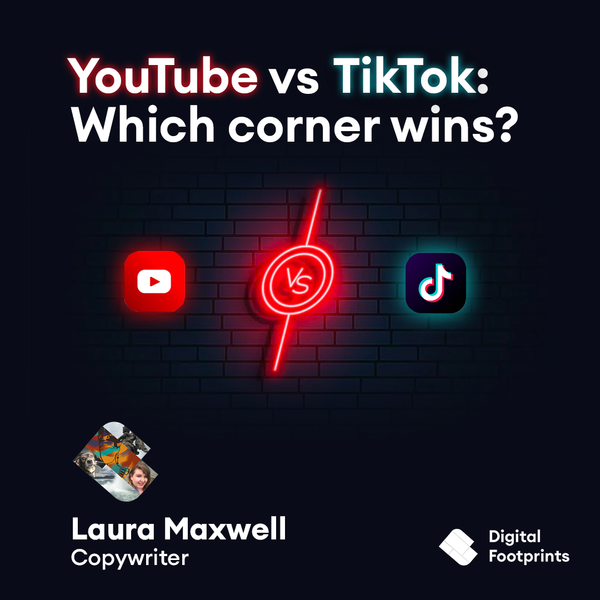Who’s interested in the YouTube vs TikTok boxing? We’ve got YouTube vs TikTok as a social media marketing platform.
The new “clock app” has blasted onto the scene and caused some waves in social media, causing marketers to rethink their entire marketing campaign. Is the new kid on the block the one to go with? Or is there some fight in this old YouTube platform after all? Read on to find out who we think would come out on top.
Long-form vs short-form video content
The main difference between YouTube and TikTok is their respective chosen formats. Sure, YouTube might have ventured back into short-form content (more on that later), but it has a long history of expanding and expanding timelines to allow for more in-depth content. For comparison, there was once a time on the YouTube space when posting a video more than three minutes long spelt death for its view count. Today, the common aim is 12 minutes for the sake of the algorithm, but that is considered short, with hour-long, vasty in-depth video essays becoming more and more common.
Meanwhile, TikTok is arguably defeating its own purpose by updating the timing of their videos to allow 10 minutes of space to be taken up. The three-minute limit was a welcome expansion of 30 seconds, but very few creators are making anything longer than three minutes. They understand that TikTok is the place for the short attention span, for the surface level of information before moving onto the next subject.
Which one you prefer comes down to personal preference, but for the sake of marketing, it’s hard to argue that TikTok comes out on top.
Reaching audiences
There are a lot more ways to reach TikTok users than YouTube viewers when it comes to marketing. On YouTube, you have pre-roll ads and in-stream ads, but if you want a more cost-effective means of advertising, you’d have to go with affiliate marketing, which is so common that users know when they are coming and are ready to fast forward.
On TikTok, affiliate branding isn’t so obvious as to start with interrupting a point being made to say “But first, this video is sponsored by…”. TikTok marketing offers a snippet of information, in a lot of engaging ways. Your affiliate partner can review the item, show its benefits, demonstrate its use, or uses, or simply create a skit around it. You as a company can showcase your products, services, team, and business, all in 30-second-long videos that are less likely to be scrolled past. If you were to start a YouTube business channel on the other hand, that is a lot of work for a lot of material very few users will watch. No one wants a deep dive into all the ingredients in a cleaning product.
Site features
However, it should be pointed out that YouTube is making purposeful efforts to be more all-rounded with their content. They have picked up on both live streaming and short-form video content. Therefore, applying the tactics of both Instagram and TikTok marketing to the YouTube platform isn’t out of the question. You can create a business YouTube channel for the sake of primarily posting short-form content, for example.
Whereas, TikTok has short-form video content and short-form video content only. No photos, no live streams, no stories, no audio: only short form video content. That is a lot of marketing opportunities getting missed.
Audience reach
When it comes to which platform is reaching more of an audience, the clear winner is YouTube. There is a wider demographic watching YouTube videos, where it is the most used platform amongst US adults at 81% but also the place where 85% of teens are going for their content. That is bound to be at least a little contributed by the fact that YouTube is far better established, having launched in 2005. Due, in part to this, it crosses age ranges, since its initial users would be in their 30’s by now.
According to Google, 80% of teens aged 13-17 have learned from YouTube, 70% of Millennials, aged 21-36 use it to discover something new and even 78% of Baby Boomers, born between 1946 and 1964, are using YouTube to learn something new.
Even though TikTok is closing this gap, TikTok is still very much a young persons’ game, with only 31% of its audiences in the US being 40 and over.
None of this is bad though. Both of these platforms offer distinct demographics that you can tap into, or you can stick to one or the other depending on your target audience.
Conclusion
Both YouTube and TikTok offer distinct opportunities to market. Rather than aiming for one over the other, the most fruitful way to get the most out of your marketing campaign is to adapt your marketing campaign to both individual platforms. Create shorter content for a younger audience on TikTok and post more in depth content or collaborate in affiliate marketing on YouTube. If you’re thinking about using these platforms to market your brand, get in touch


